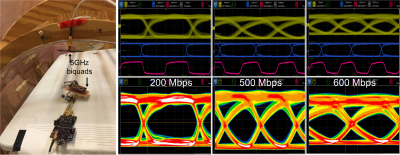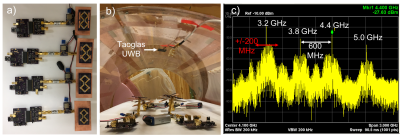Greig Cameron Scott1, Audrey Chan2, Wonje Lee3, Fraser Robb4, John Pauly5, and Shreyas Vasanawala6
1Electrical Engineering, Stanford University, Stanford, CA, United States, 2Victoria University of Wellington, Wellington, New Zealand, 3Pediatric Radiology, Stanford University, Stanford, CA, United States, 4GE Healthcare, Aurora, OH, United States, 5Stanford University, Stanford, CA, United States, 6Radiology, Stanford University, Stanford, CA, United States
1Electrical Engineering, Stanford University, Stanford, CA, United States, 2Victoria University of Wellington, Wellington, New Zealand, 3Pediatric Radiology, Stanford University, Stanford, CA, United States, 4GE Healthcare, Aurora, OH, United States, 5Stanford University, Stanford, CA, United States, 6Radiology, Stanford University, Stanford, CA, United States
Antenna components and amplitude shift keyed (ASK) modulation is assessed for very short range high speed data links. Prototypes are developed using serializer/deserializer components to achieve rates of 600 Mbps and signal integrity is evaluated.

Figure 4: Mock bore tests using a pair of 5 GHz Biquad antennas at 200, 500 and 600 Mbps show progressive signal degradation of the demodulated bit pattern and eye diagrams, though signal quality was sufficient for clock recovery.

Figure 5: Mock Bore multi-channel deployment and spectrum. Four ASK modulators at 200 Mbps with 3.2, 3.8, 4.4 and 5.0 GHz carriers and Biquad antennas are deployed. A single Taoglas UWB is used for signal reception. The spectrum shows the SINC-like nulls at 200 MHz offsets, and how further signal lobes would over-run to neighboring bands as adjacent channel interference.
